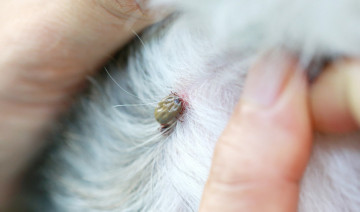Ticks are unwelcome guests that can pose serious health risks to our beloved pets. These tiny parasites can transmit diseases like Lyme disease and Rocky Mountain spotted fever, making tick prevention and regular checks an essential part of pet care. In this blog, we'll guide you through the process of where to look for ticks on your pets to help ensure their well-being.
The Head and Neck Area
Ticks are drawn to warm, hidden areas, and your pet's head and neck are prime spots for them to attach. Comb through your pet's fur, paying close attention to the ears, around the eyes, and under the collar. Use your fingers to gently part the fur and inspect these areas for any signs of ticks.
Around the Ears and Inside the Ears
Ticks are skilled at finding cozy hiding spots, and the ears provide just that. Gently examine the outer surface and inside of your pet's ears, using your fingers to feel for any small bumps or irregularities. Ticks may be nestled close to the skin, so be thorough in your inspection.
Under the Collar and Neck Region
Ticks often gravitate to areas where they can easily attach and feed, and the collar and neck region are prime targets. Slide your fingers beneath your pet's collar and feel around the neck area, ensuring you check both the front and back sides for any ticks.
Between the Toes and Paw Pads
Ticks are experts at finding hidden crevices, and your pet's paw pads provide such an environment. Examine between the toes and paw pads carefully, as ticks can easily attach in these areas. Gently spread the toes apart to get a clear view.
Under the Tail and Around the Genital Area
Ticks can also be found in less visible areas, such as under the tail and around the genital region. These areas provide a moist and hidden environment that ticks are drawn to. Lift your pet's tail and inspect thoroughly, taking note of any unusual bumps or lumps.
Underbelly and Groin
The underbelly and groin areas are warm and often sheltered, making them attractive to ticks. Gently lift your pet's legs and examine these areas closely. Part the fur and visually inspect, using your fingers to feel for any ticks that might be hidden.
Regular tick checks are a crucial part of responsible pet ownership, especially during warm months when ticks are most active. By knowing where to look for ticks on your pets and conducting thorough inspections, you can detect and remove these parasites promptly, reducing the risk of disease transmission and keeping your furry companions safe and healthy. If you find a tick, use proper tick removal techniques or consult your veterinarian for assistance. Remember, prevention is key, so consider using tick prevention products recommended by your vet to further safeguard your pets from these potential threats.






Comments